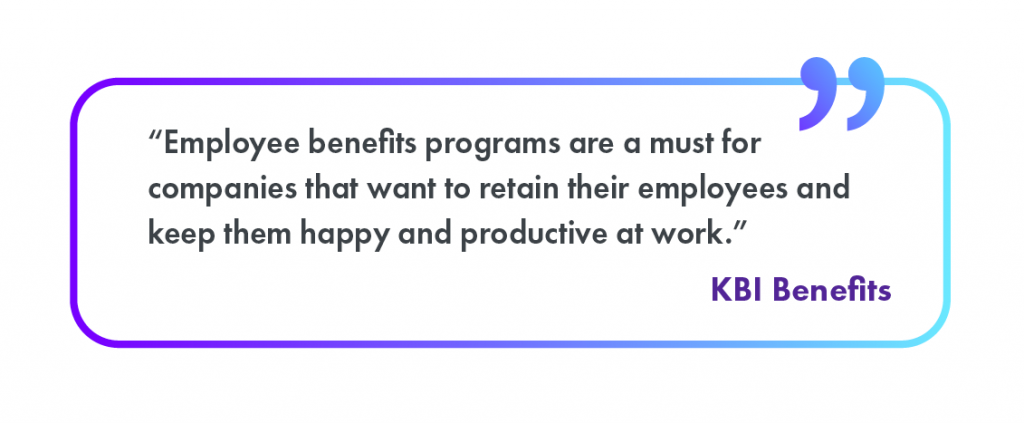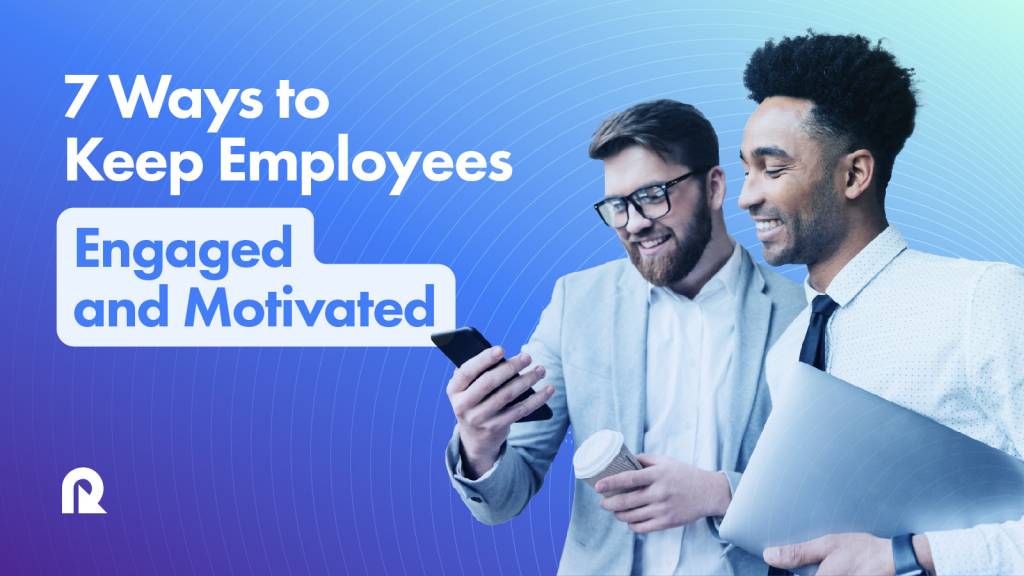If it’s true, as Gallup found, that engaged teams can increase profitability by 23%, then it’s valuable for every business owner and executive to learn how to keep employees engaged and motivated.
More importantly, having engaged and motivated employees is a largely untapped business advantage since in the US, for example, 65% of the workforce is not engaged, according to Gallup.
“Business or work units that score in the top quartile of their organization in employee engagement more than double their odds of success (based on a composite of financial, customer, retention, safety, quality, shrinkage and absenteeism metrics) when compared with those in the bottom quartile,” they said.
Furthermore, “those at the 99th percentile have nearly five times the success rate of those at the first percentile.”
But how can you achieve this seemingly difficult task?
In the rest of this article, we will highlight seven proven things that those learning how to keep employees engaged and motivated can do. If you take these steps, you will be distinguishing yourself, whatever industry you operate in.
[Do you want to reward your employees in a way that meets their real needs? Sign up for Reloadly to create and send customized gift cards from over 300 brands to them, wherever they are.]
1. Care for them
It’s no longer news that many employees place more emphasis on the benefits they will enjoy rather than the salary they will receive when choosing where to work.
For example, recent research by Aviva, an insurance company in Britain, revealed that 41% of those surveyed were attracted to their jobs because of the work-life balance it offers while 36% chose it because of the pay.
Research by Forbes Advisor has also shown that 1 in 10 US employees would take a pay cut to access better benefits. Also, 40% of employers believe that workers leave their organizations in search of those with better benefits.
Consequently, “employee benefits programs are a must for companies that want to retain their employees and keep them happy and productive at work,” said KBI Benefits, a human resources firm. “They help employees feel valued and secure while they save money on healthcare costs.”

Benefits here are not limited to health insurance, paid leave, and retirement plans. They include well-being enhancing ideas like student loan repayment, work from home (WFH) opportunities, subscription to the gym, company transportation, lunch, mental health awareness programs, etc.
Impact on engagement and motivation
What about the connection between benefits and employee retention and productivity (two variables that are positively correlated with engagement and motivation).
A survey by Qualtrics, an experience management company, concluded that employees that are satisfied with their pay and benefits are 13% more likely to stay for 3+ years. Also, a survey by Aflac, an American insurance company, found that 83% of employers believe their benefits programs positively impact workers productivity.
We can then conclude in the words of Corporate Wellness Magazine that “by offering attractive and meaningful benefits, organizations can create a positive work environment that fosters loyalty, productivity, and engagement.”
“Remember,” they continued, “engaged employees are more likely to go the extra mile, contribute innovative ideas, and remain dedicated to the long-term success of the organization.”
2. Listen to them
For many employees, the relationship they have to their superiors and the executives of the organization is that of consistent listening. They take and execute orders and then wait for the results of performance reviews.
Such a unidirectional relationship is inimical to engagement, motivation, productivity, and employee satisfaction. Employees who are not heard don’t feel valued and, consequently, they lack a sense of belonging.
In fact, 41% of employees surveyed by All Voices, an employee relation platform, have left a job because they were not heard. The Workforce Institute also reported that 86% of those surveyed feel they are not heard fairly or equally in their workplace.
The problem here is two fold, according to a study by Frontiers in Psychology. First, managers and executives don’t make time for employee feedback. Second, they make time for the feedback but don’t act on it.
Regarding the first, to gain a competitive advantage, you need to actively seek employee feedback by asking for it through surveys, interviews, or, more importantly, anonymous messages (you will be surprised how people can bear their minds when there is no implicit threat of a sack). Allow them to express their feelings, comment on how well they are enjoying or not enjoying the job, the problems they face, and how they think the company’s culture can be improved.
The work can be better done from bottom up as team leads bring the feedback of team members to department heads and so on, until it reaches the zenith of the organogram.
However, you must also maintain an open communication line (or open door policy) policy where employees can give unsolicited feedback about their experience in particular or the organization in general.
The second issue is about implementing employee feedback. 40% of those surveyed in the Workforce Institute research believe that their feedback is not implemented.
Of course, you can’t implement everyone’s feedback since it’s possible for one employee’s wishes to be the exact opposite of what another may want.
However, there should be a conscious desire to implement employee feedback when they are not inimical to the goals of the organization or the welfare of everyone else. And in cases where feedback will not be implemented, it is important to let employees (in particular or in general) know why you won’t be doing so.
Receiving this feedback from you will heighten their sense of belonging and emotional connection as they feel valued as an important part of the team.
Impact on engagement and motivation
“When employees feel heard and valued, their engagement levels soar,” according to Culture Monkey, an employee engagement software. “By actively listening to their ideas, concerns, and suggestions, you create a sense of ownership and belonging. This, in turn, boosts motivation, job satisfaction, and overall commitment to the organization.”
This is confirmed by a survey done by The Workplace Institute. They found that 74% of employees feel they are more effective at work when they are heard. Also, they found a correlation between being heard and employee engagement, with 92% of engaged employees feeling heard and only 30% of disengaged employees feeling the same way.
3. Empower them
Matching responsibility with authority (resources) is a classic tip for effective management.
When employees have their tasks defined but they are ill-equipped to achieve them, a disconnect begins to emerge between them and the work.
Everyone knows that the global business world is evolving and organizations that want to thrive must follow suit. In a bid to do this, employees will be asked to do things that will require new skills.
This in itself is not a problem. But as a manager or executive, you must also check-in to be sure employees have the needed skills, tools, and resources to reach this new height. If they don’t, it is your responsibility to supply them with what they need to get the ball rolling.
Organizations tend to ignore this point when incorporating WFH. There is the temptation to ignore the needs of remote teams since they are not physically present. But remote work requires its own tools – especially collaborative tools (Slack, Zoom, Notion, and the likes) – and business leaders must provide them.
A supportive team founded on teamwork and mutual support is one resource that even the best of employees need. Organisations must therefore prioritize team building and nurture a community of resource sharing and mutual support.
In addition, business executives must constantly evaluate the effectiveness of the resources they provide to determine if some of them need to be upgraded to fit current realities.
This is one of the reasons why an open line of communication is also important. Managers and executives are not omniscient and resource gaps are most times better identified by the employees using those resources.
An open line of communication will tend to encourage employees to communicate resource gaps and request what is needed to make progress. On the other hand, managers and executives must be willing to listen, empathize, and then provide what employees need based on resource availability.
Realistically, there will be times when new resource requests can’t be met. Again, it is important to communicate this to the affected employees instead of staying silent and leaving them to make assumptions and conjectures.
Even in those moments of insufficient resources, you can still demonstrate empathetic leadership.
“The request for additional resources or help is a golden opportunity to embrace more compassionate leadership,” according to Change Management Solutions, a platform helping to prevent employee burnout. “By working together to resolve these limitations, it becomes much more likely that you will retain their levels of commitment and engagement that are crucial to organizational success.”
Impact on engagement and motivation
“Ensuring your employees have the right tools to do their job well can benefit their productivity, but perhaps even more importantly, it may affect their job satisfaction,” said Forbes.
4. Invest in them
Only 34% of employees are satisfied with the job specific training they receive from their employers while a third feel training programs are outdated, according to Zavvy, a talent management platform.
One consequence of this is that only 42% of critical roles can be filled internally.
On the other hand, a LinkedIn survey reported that 94% of employees would stay in a job for a longer period if they were offered a clear career development path.
There are at least two issues here.
First, employees need to see a clear path from where they are to where they want to be. If all the senior roles are filled from external recruitment, it is natural for them to wonder what their career prospects are.
From onboarding onwards, they need to know that if they work for these number of years and acquire these number of skills, they can be promoted to these types of positions.
Secondly, employees want employers that are willing and ready to invest in their career advancement in preparation for more significant roles.
Mentorship and training programs must be available and they must focus on both technical skills as well as preparation for leadership positions.
Impact on engagement and motivation
According to Forbes, there are at least five ways that employee development are valuable for organisations: increase employee motivation, enhance productivity, improve employee retention, help in attracting top candidates, and improve profitability.
Regarding motivation, they note that, “Employees need to feel a value exchange with their job, that their goals and dreams are essential and that their employer cares about them reaching those goals. Like the plant, they need to be tended to so they can grow and flourish.”
Regarding engagement, Clear Company, a talent management software, adds that “training, reskilling, and upskilling not only increase engagement but also equip employees with the knowledge and capabilities they need for innovative thinking and problem-solving.”
A survey by Better Buys, a software review platform, confirms this theoretical connection: employees who get professional development opportunities are15% more engaged and 34% more likely to stay. Similarly, Deloitte reported that employers who provide such opportunities can expect 30-50% higher engagement and retention rate.
5. Trust them
There is perhaps no term that employees hate as much as “micromanaging.” While some level of supervision is required, employees don’t like when their superiors micromanage them and impose certain work styles. It shows a lack of trust in their technical ability and creativity.
“Being micromanaged doesn’t just waste time—it’s also stressful, irritating and an all-round killer for employee engagement,” according to Paycor, a human resource management software.
A survey by Monster, a recruitment network, has found that 73% of employees consider micromanaging a red flag when choosing an employer and 46% said they would quit because of it.
The solution to micromanagement is to empower employees and trust them enough to execute the activities assigned (as long as you have provided them with the necessary resources). In fact, this is one area where established companies can learn from startups.
An alternative to micromanagement has been called employee empowerment which Upwork, the freelance website, defines as “a modern management approach that enables employees to take ownership of their work, be more creative and engaged in their jobs, and make independent decisions.”
Upwork has suggested six ways organizations can implement employee empowerment:
- Maintain clear communication of expectations: There must be a clear delineation of tasks, responsibilities, and KPIs.
- Offer training and development opportunities: As we said above, employees must also have enough resources and tools to successfully carry out their responsibilities.
- Encourage employee feedback and participation: Create channels where employees can give their feedback on specific responsibilities and general concerns.
- Establish a supportive workplace culture: Make the workplace supportive of employee creativity and innovation. Make employees comfortable so they can do their best work.
- Recognize hard work and dedication: We will say more about this presently.
- Allow room for mistakes: There cannot be improvement without mistakes. The benefits of giving employees space to do their best work will outweigh their mistakes. Work with them to recognize and solve the problems and avoid them in the future.
Source: Upwork
Impact on engagement and motivation
Empowered employees are more productive, creative, and innovative. They are also more likely to feel a sense of ownership and to stay in the organization, according to Culture Monkey.
Upwork also believes that “Organizations can create a more productive and engaged workforce that improves business outcomes by empowering employees.”
6. Affirm them
Since employees are doing the work they are paid for, it’s easy to believe that recognizing them is unimportant.
This mindset can, however, have a negative repercussion on engagement, motivation, and productivity.
We will consider recognition or affirmation in two ways.
The first is a general recognition of all your workers for their individual contributions to the company. Traditionally, we see recognition as only necessary when people go over and beyond. However, a general “we acknowledge your efforts towards the success of this organization” can go a long way in reminding employees that they matter.
Such recognition is especially important for those whose work is a far removed from the actual output of the organization (the security man or front desk officer for example). These people often struggle to see why their work matters and this feeling can make them less engaged and motivated.
You can do this in personal emails, one-on-one conversations, handwritten messages or whatever innovative way you can conjure. Birthdays and work anniversaries are often good opportunities to do this. Some organizations have also created a whole day to recognize and appreciate their workers (often called a Workers’ Appreciation Day).
The second is a special recognition for employees who have gone over and beyond to achieve certain feats. Overachievers want to be seen and acknowledged and ignoring them can kill their spirit leading to disengagement. In this case, public acknowledgment is generally better (it might also have the effect of encouraging others to do better).
Impact on engagement and motivation
A survey by Gallup and WorkHuman, a firm dedicated to creating high-performance and inclusive workplaces, has found that when employee recognition hits the mark, workers are 4X more engaged, 73% less likely to experience burnout, and 5X more likely to see themselves in the organization for the long term.
“Recognizing your employees helps them understand their place within your organization,” according to Indeed, a job listing platform. “Essentially, it lets them see how their work directly or indirectly contributes to the company’s success. Knowing their work makes a difference motivates them and increases productivity in the process.”
7. Reward them
Recognition is better when it is accompanied by a reward.
While rewards should not be given without verbal recognition, in most cases, verbal recognition should also be accompanied by a reward, no matter how small.
Cash bonuses, vacation time, movie tickets, spa day, a lunch with an executive, meal delivery, free books, are some of the reward ideas you can implement.
Gift cards have also become popular as a way to reward employees for many reasons. First, you can use them for general reward programs for all your workers (say on Workers Appreciation Day) or at the end of the year or as incentives for a job well done.
Source: Wired
Second, gift card reward programs give the recipient the freedom to decide what they want to buy. Choosing a gift for people shows thoughtfulness and many people appreciate it – but sometimes an acute need may be left unmet while the gift bought might end up being surplus to requirement.
Since the aim is for the gift to be impactful, gift cards ensure that the recipient can buy whatever they want with the credit.
A platform like Reloadly provides gift cards from over 300 brands, including popular ones like Starbucks, Apple, and Amazon. The wide variety of options ensures that everyone can find what they want from the store they want.
Thirdly, gift cards can be customized and branded. Reloadly provides this option for all those who use its platform. You can design your gift cards with your brand elements and even leave customized messages for the recipient. Such a gesture can reinforce the fact that you care about your employees, further enhancing engagement, motivation, and productivity.
[Do you want to keep employees engaged and motivated by creating rewards programs for them? Sign up to Reloadly to design and send branded virtual and/or physical gift cards from over 300 brands to your employees.]
Takeaways
- Employers must learn how to keep employees engaged and motivated if they want to improve business performance and achieve company goals.
- Seven proven employee engagement strategies include caring for, listening to, empowering, investing in, trusting, affirming, and rewarding their employees.
- Why is employee engagement important? Organizations that can engage and motivate workers will have competitive advantage, irrespective of their industry.
- Gift cards are one popular way to reward employees.



